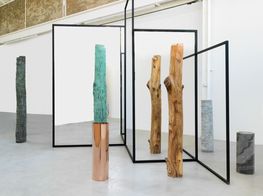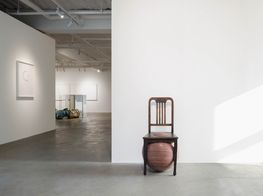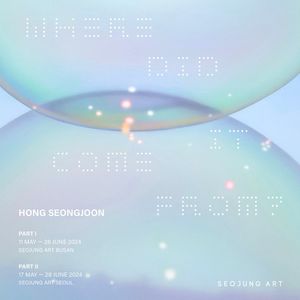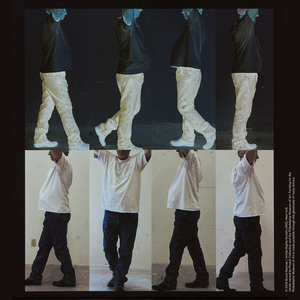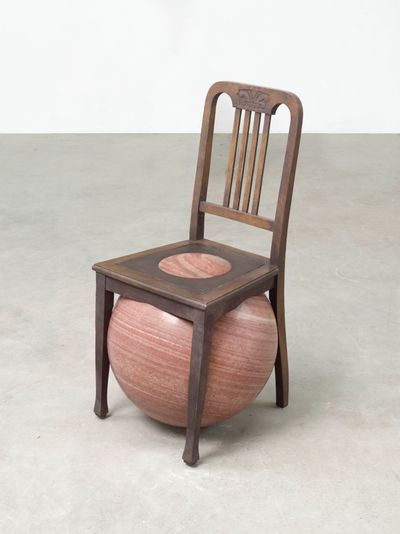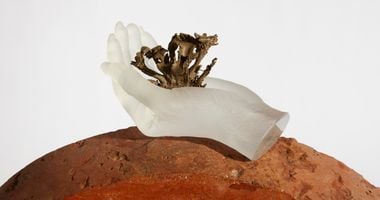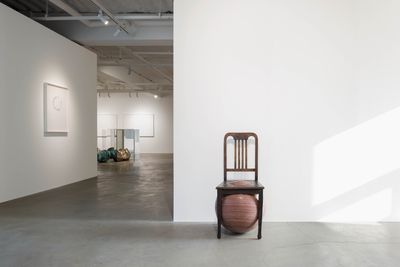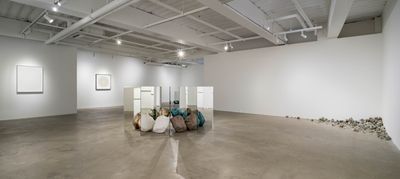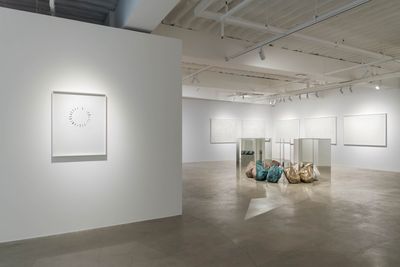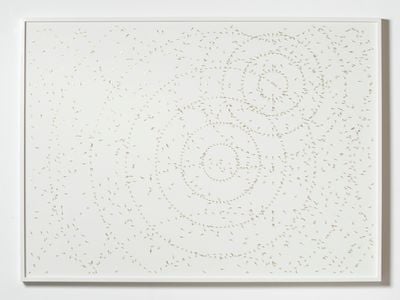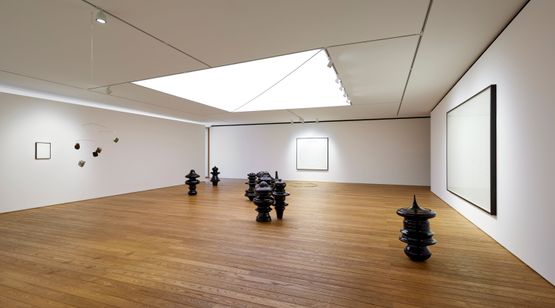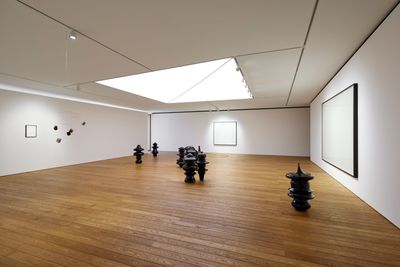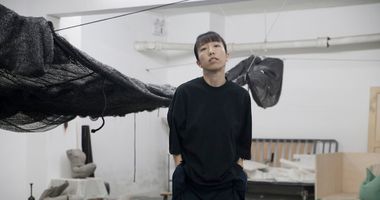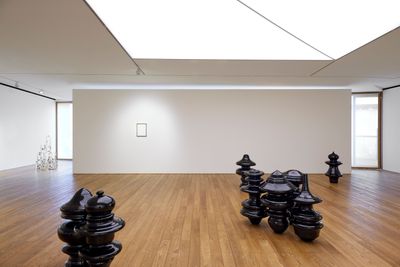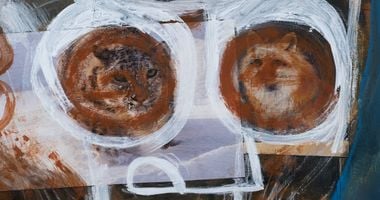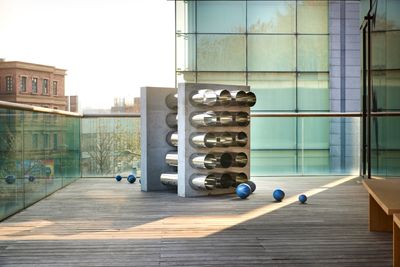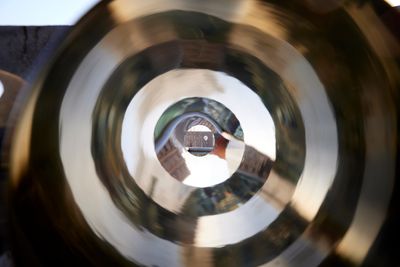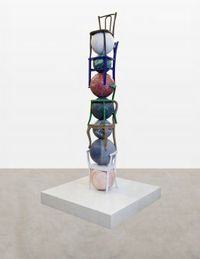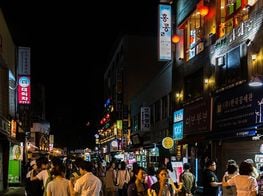Alicja Kwade’s Invitation to the Multiverse
Alicja Kwade's first solo show in Seoul, consisting of 35 recent works plus an entirely new series, is a joint venture by two of the city's international galleries, König Galerie and Pace Gallery.
The exhibition's title, Sometimes I Prefer to Sit on a Chair on the Earth Surrounded by Universes, is split between the two spaces.
König Seoul takes the first half, Sometimes I Prefer to Sit on a Chair on the Earth: a sentence that is embodied in Siège du Monde (2021): a wooden seat under which rests a planet-like marbled orb, whose striking colours range from maroon to white.
It would seem that this orb, which gently bursts through the chair's seat, is the earth per the show's title—even if it is missing the blues and greens so characteristic of the planet as we know it, and seems more akin to Mars.
Does this marble sphere represent another version of the world in a parallel universe? And who is this 'I' who prefers to sit on a chair on the earth? Questions like these amplify a sense of curiosity about where the artist is taking us.
In the middle of the gallery, the sculptural work Duodecuple Be-Hide (2021) confirms that this is an exhibition—a space—that one cannot know entirely, since all of its elements signify a kind of motion.
Twelve stones form a circle on the floor with double-sided rectangular mirrors standing between each of them. There are three types of stone: sandstone, granite, and bronze, the latter alternating between a green and gold patina.
Due to the reflective feedback of these mirror interventions, viewers cannot see all of the stones at any one point, but they can observe the variables that emanate from a complete yet fully unknowable composition.
Kwade's focus on the multiplicity of space in Duodecuple Be-Hide leads to an examination of time in the new 'Entropie' series (2021), in which watch hands are assembled onto paper.
Each work expresses a specific period of time, with more watch hands incorporated into works expressing longer periods, as in Entropie (71 days 12 hours), in which the hands form concentric circles, while more free arrangements see hands bump into each other in Entropie (98 days 15 hours).
In a world that tends to make order out of its absence (or at least tries to), Kwade observes countless earthly phenomena and places them in the context of their entropic chaos.
Entropy is a scientific concept that is immeasurable, a state of disorder; perhaps the very principle of uncertainty. In keeping, these self-operating watch hands are assembled to create 'unstructured and entropic complexity'.1
In this theoretical vacuum, immeasurable energies are scaled within the framework of time that are scaled again using numerous same-sized watch hands whose compositions seem random but perfectly in order. Viewers can make assumptions about their variations, but they just become yet more variables.
The theme of multiplying time and space continues at Pace Gallery, which takes the second half of the exhibition's title, Surrounded by Universes.
On the second floor, the 'Rain' series (2018–2021) reflects measurements of rainfall, with measuring sticks cut into single millimetres arranged in eight paper works. The length of each measurement is indicated in each work's title—such as Rain (20cm) and Rain (30cm)—continuing the theme of logging measurements within artwork titles.
In a world that tends to make order out of its absence (or at least tries to), Kwade observes countless earthly phenomena and places them in the context of their entropic chaos.
The result is the visualisation of scales that collide and then resettle; a planet in perpetual motion. Such that the nine black ceramic sculptures scattered over the third floor, which look like variations of chess pieces or toy-top spinners, seem to be in motion, even if they are static.
Titled All at any Time (2018), it is easy to imagine these forms dividing or multiplying like Kwade's other works—a testament to the artist's concern with interfering in temporal perceptions. As Kwade has said, 'My work starts where I stop understanding.'2
On the gallery terrace, Multi-Teller (20) (Orgel) (2018) consists of several blue-toned macauba balls resembling the earth resting on the ground, which seem to have emerged from uniform rows of several stainless-steel pipes of different lengths embedded in two concrete rectangles.
The sculpture appears like some sort of oven that bakes planets rather than bread: a diagram of a multiverse where multiple worlds exist in tandem, with each scattered orb becoming evidence of a constant process of earth-making.
Perhaps this is another type of measuring unit. A scaling that speaks to philosopher Byung-Chul Han's observation that information deforms the world rather than illuminating it, levelling the boundary between true and false.
While the multiplications of time and space in Kwade's works provide an abundance of information, they do not propose linear interpretations. Rather, what emerges in these investigations of planetary phenomena is a multiversal perspective of atomic matter that constantly bewilders. —[O]
1 Levi R. Bryant, The Democracy of Objects (Ann Arbor: Open Humanities Press, 2011): p. 231.
2 'Alicja Kwade Interview: Time, Space and Gravity', Louisiana Channel, 13 September 2018, Accessed 22 December 2021 on YouTube, https://www.youtube.com/watch?v=jCr5rV2Mbno.

